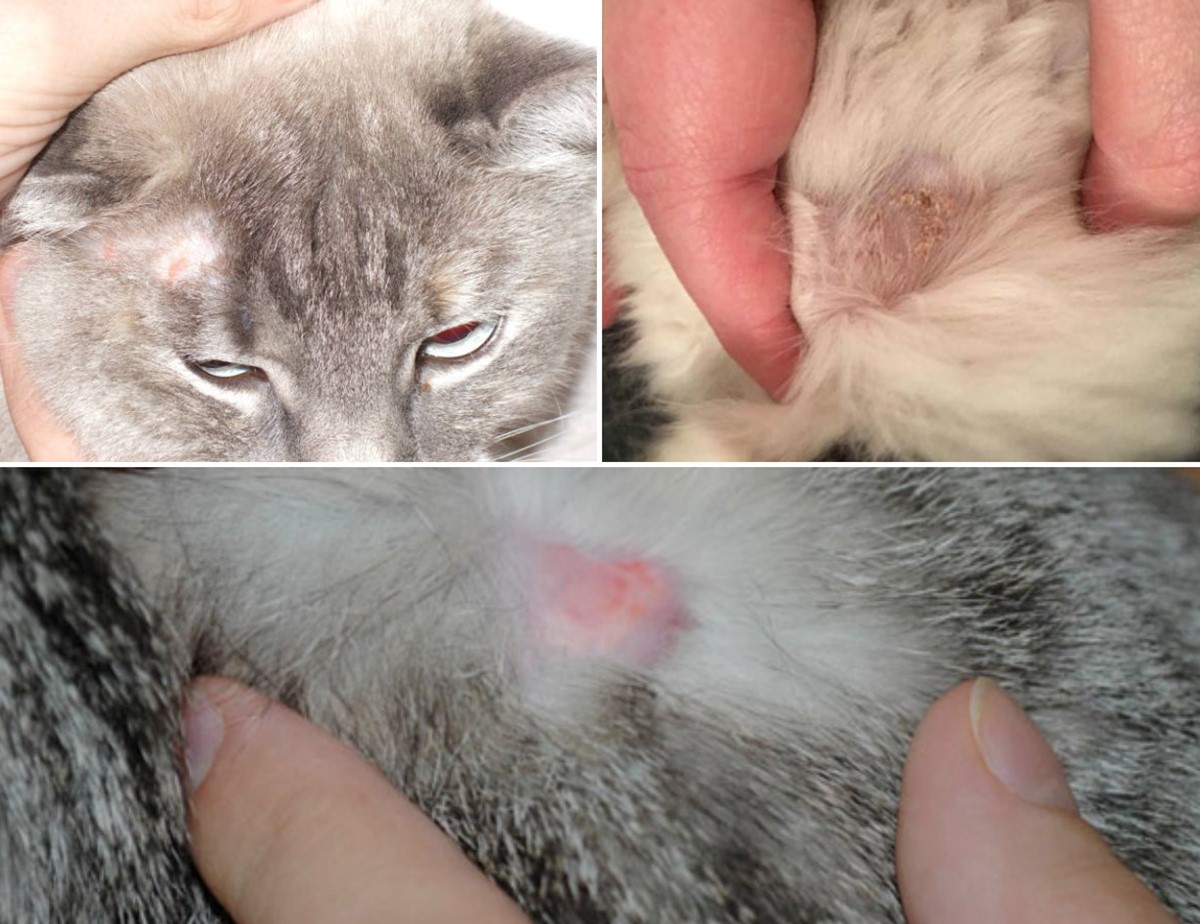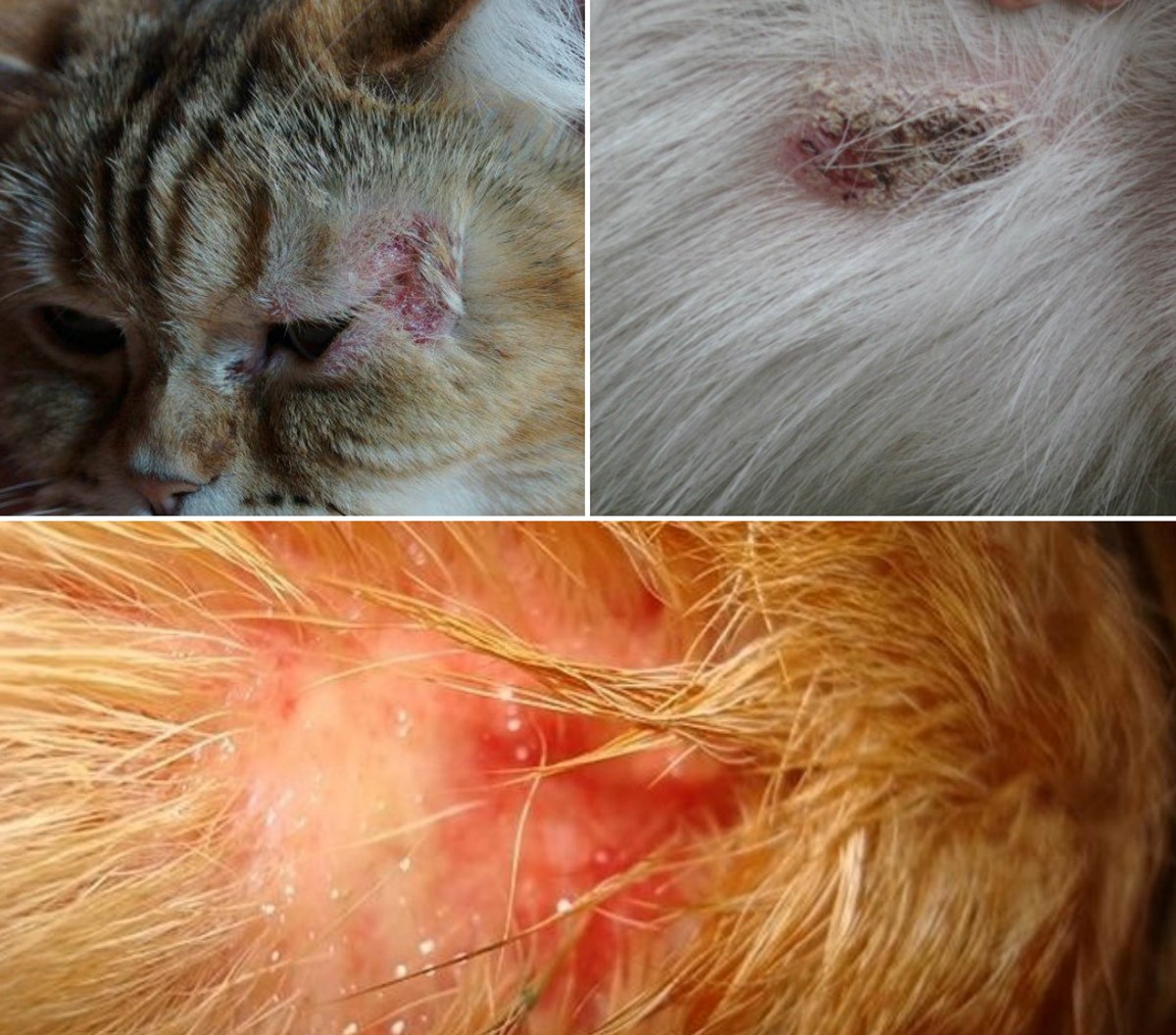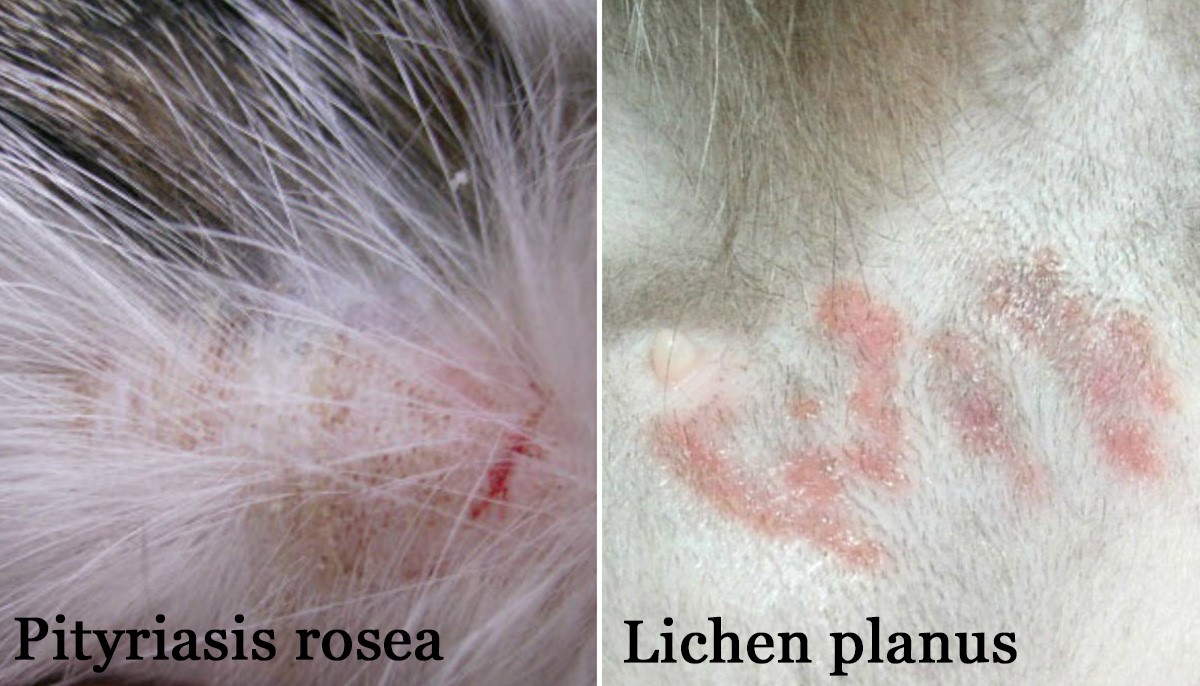Lichen is a common name for skin diseases caused by various microorganisms (usually viruses or fungi). Therefore, before treating lichen in a cat, it is necessary to understand what exactly caused the infection. Depending on the pathogen, several varieties are distinguished.
Shorn (ringworm) in cats
The most common type. The disease is caused by two types of fungi:
Trichophyton;
Microsporum.
Despite various names, the symptoms of these diseases are the same:
roundish spots with an ashy coating appear on the body, in the area of which wool falls out;
the animal often itches;
purulent vesicles swell in the affected area, scales flake;
over time, the number of lichen spots increases.

Ringworm is dangerous because it can be transmitted to other living creatures, including humans. Kittens often get sick because they have weak immunity.
How to cure ringworm in a cat
The ailment is diagnosed by glowing with a Wood lamp (Black light, Wood's light) or by analyzing scales and crusts collected from the affected area. For treatment, topically apply antifungal ointments (with miconazole or thiabendazole). All manipulations should be carried out with gloves.
If the animal is accustomed to water procedures, it is recommended to bathe it with a medical shampoo, which contains fungicide (for example, enilconazole, ketoconazole). If the last stage of lichen in a cat is observed, then you can not do without the use of tablets.
Pityriasis versicolor in cats (Pityriasis (Tinea) versicolor)
It is also called multi-colored, since the color of the affected areas is different: pink, yellow, brown. The cause of Tinea versicolor is a fungal infection. As in the case of the first variety, it can also be transmitted to other individuals.
Most often, treatment is carried out with the same antimycotic drugs with enilconazole or with a solution of hydrogen sulfide.
Wet (dehydrated) eczema in cats (Eczema madidans)
The disease manifests itself due to a decrease in immunity, therefore it is not able to be transmitted to other creatures. An ailment can provoke factors such as:
stress;
hormonal disbalance;
malnutrition;
exposure to chemicals (e.g. detergents);
lack of hygiene.

The main distinguishing symptom is the formation of bursting bubbles on the spots, from which a yellowish liquid flows. Eczema treatment should be aimed at strengthening the protective function of the body and drying out weeping sores. As local therapy, salicylic, sulfuric, tar, zinc and other ointments are used.
Less common types of lichen
In rare cases, there are:
Pink, or Giber (Pityriasis rosea) - is probably triggered by a viral infection. A distinctive feature is pink spots with well-defined borders, severe itching. The disease is not contagious.
Red flat, or Wilson (Lichen planus) - a disease of incomprehensible etiology, doctors are inclined to believe that it manifests itself in a failure in the immune system. It is also not transmitted to other animals or to humans.

Both types are treated by increasing the protective functions of the body, correcting nutrition (important foods rich in vitamins and minerals). To stains disappear faster, it is recommended to smear them with any antibacterial cream. Tea tree essential oil also helps a lot, but some animals do not tolerate its pungent odor.
Now you know how lichen in cats looks and how to cure it. And in order to prevent the appearance, keep the house clean, do not let your pet get in touch with unfamiliar (especially homeless) pets, feed balanced and quality food and, at the first sign of infection, go to the veterinarian to make an accurate diagnosis. If your four-legged friend often picks up this disease, for prophylaxis in a veterinarian, give him a vaccine against lichen for cats (Wakderm, Mikroderm, etc.).
 Select language
Select language 





.jpg)
.jpg)
.jpg)
.png)
